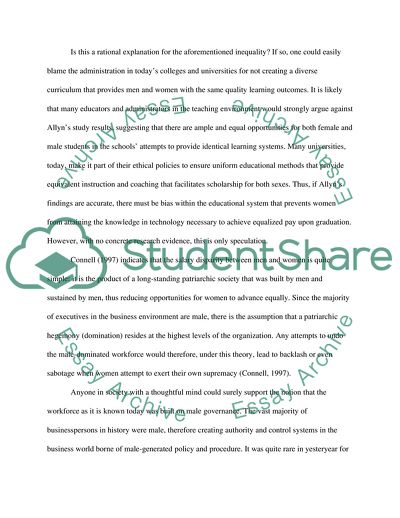Cite this document
(Salary Inequality in the Workplace: Why do Men still Earn More Literature review Example | Topics and Well Written Essays - 1250 words - 1, n.d.)
Salary Inequality in the Workplace: Why do Men still Earn More Literature review Example | Topics and Well Written Essays - 1250 words - 1. https://studentshare.org/gender-sexual-studies/1798323-salary-inequality-in-the-workplace-when-do-men-still-earn-more
Salary Inequality in the Workplace: Why do Men still Earn More Literature review Example | Topics and Well Written Essays - 1250 words - 1. https://studentshare.org/gender-sexual-studies/1798323-salary-inequality-in-the-workplace-when-do-men-still-earn-more
(Salary Inequality in the Workplace: Why Do Men Still Earn More Literature Review Example | Topics and Well Written Essays - 1250 Words - 1)
Salary Inequality in the Workplace: Why Do Men Still Earn More Literature Review Example | Topics and Well Written Essays - 1250 Words - 1. https://studentshare.org/gender-sexual-studies/1798323-salary-inequality-in-the-workplace-when-do-men-still-earn-more.
Salary Inequality in the Workplace: Why Do Men Still Earn More Literature Review Example | Topics and Well Written Essays - 1250 Words - 1. https://studentshare.org/gender-sexual-studies/1798323-salary-inequality-in-the-workplace-when-do-men-still-earn-more.
“Salary Inequality in the Workplace: Why Do Men Still Earn More Literature Review Example | Topics and Well Written Essays - 1250 Words - 1”. https://studentshare.org/gender-sexual-studies/1798323-salary-inequality-in-the-workplace-when-do-men-still-earn-more.


